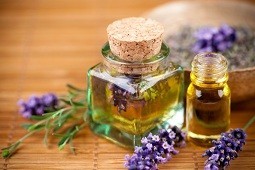American Journal of Essential Oil and Natural Products
Volume 1, Issue 2
Seasonal variation in the composition of Plectranthus amboinicus (Lour.) Spreng essential oil and its biological activities
Author(s): Seham S. El-hawary, Rabie H. El-sofany, Azza R. Abdel-Monem*, Rehab S. Ashour, Amany A. Sleem.
Abstract: The effect of seasonal variation on the yield and composition of the essentials oil of the leaves and stems of Plectranthus amboinicus (Lour.) Spreng, growing in Egypt, collected along the four seasons at three months intervals viz., January, April, July and October was studied. The highest yield of essential oils of both the leaves and stems was obtained during spring (0.12% and 0.13% v/w fresh weight, respectively).The GC/MS analysis of the essential oil samples revealed a qualitative and quantitative variation in chemical composition. Concerning the leaves, δ-cadinene was the major component in the oils of spring (18.66%) and autumn (12.52%), while, β-caryophyllene (12.65%) and thymol (8.75%) were the major components in the oils of winter and summer, respectively. Concerning stems, α-humulene was the major component in the oil samples of winter (11.14%) and summer (12.70), while, β-copaene-4- α-ol (9.37%) and thymol (13.02%) were the major constituents in the oil samples of spring and autumn respectively. Further analysis of GC/MS data revealed that, the total sesquiterpenes were of higher percentage than the total monoterpenes in both the oil samples along the four seasons. The total oxygenated compounds were found highest in the volatile oil of the leaves collected in summer (53.57%) and volatile oil of the stems collected in spring (55.99%).The volatile oils of the leaves and stems exhibited variable antioxidant, anti-inflammatory, analgesic, diuretic, cytotoxic and antimicrobial activities. The LD50 of the volatile oils of both the leaves and stems were up to 0.05 ml/kg.
Download Full Article : Click Here
